Fuerteventura, The Canary Islands 3rd – 9th November 4014.
Trip Report With Tour Leader: Stephen Daly Tour Participants: John Green, Cecile Gillard, Aland Mackereth and Jane Walker, Geoff Phillipson and John and Nadine Shearman
Tour Highlights: Several close encounters with the rare Houbara Bustards, good views of all the desert species, watching Barbary Falcon hunting, Cory’s Shearwaters off El Cotillo
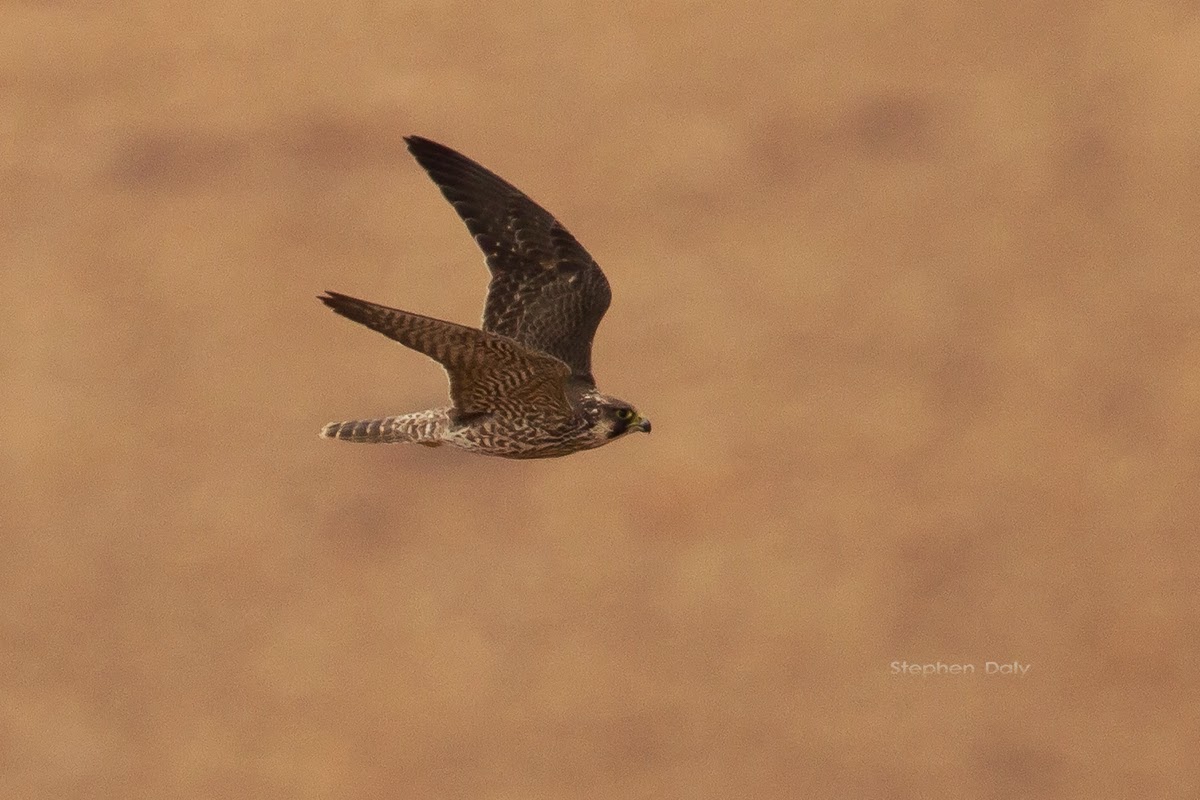

Day 1 – Monday 3rd November 2014
The sun was setting quickly as Stephen met the group late in the afternoon at Fuerteventura airport. So without further ado we loaded the minibus and travelled north to our hotel at La Oliva which was going to be our base for the week.
After an excellent meal and lots of enthusiastic chat about our forthcoming plans for finding the rare bird species on the island we said goodnight and retired for the night. Stone Curlews called from a nearby hillside.
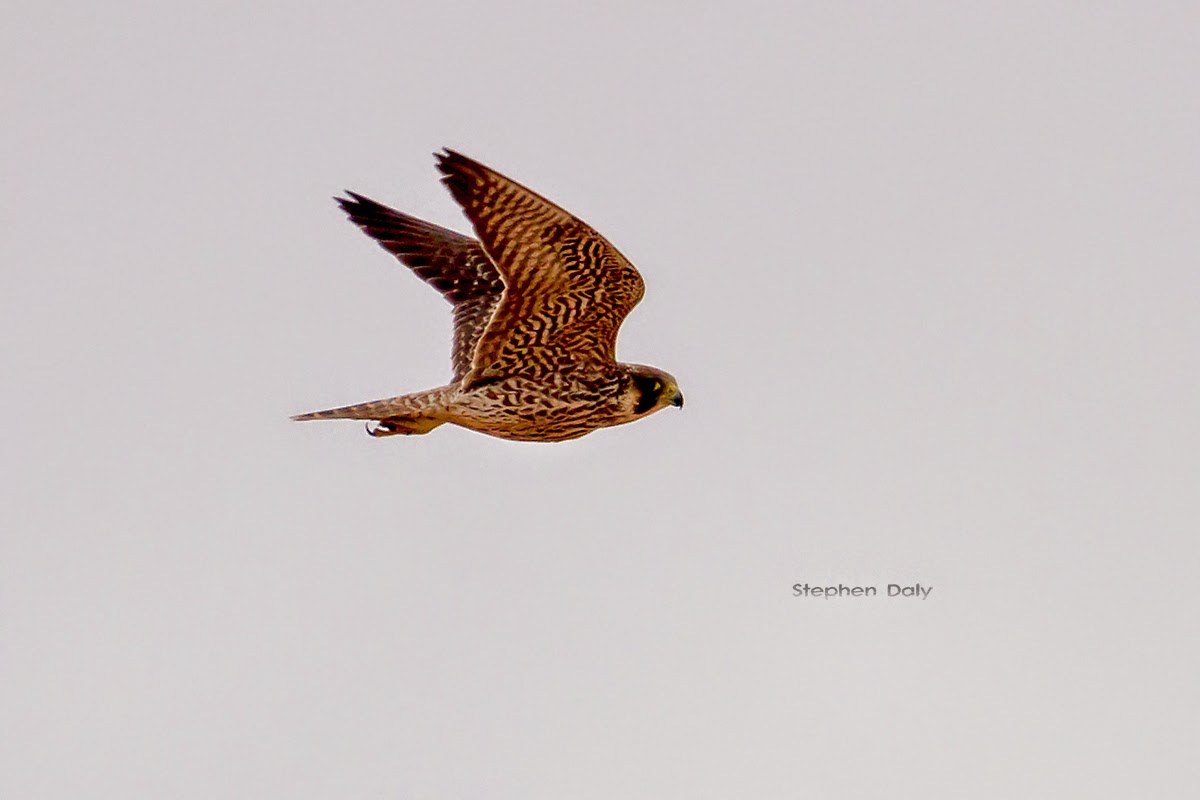


Day 2 – Tuesday 4th November 2014
The sun came up around 0730hrs and the warm temperature and blue skies peppered with some small clouds over the weathered volcanic landscape looked amazing. Already some of the group had spotted a Desert Shrike and Common Chiffchaff in the hotel gardens and a Black Redstart flitted around the rooftops. There were plenty of Spanish Sparrows close to the hotel and we had excellent views of this smart looking sparrow. Collared Doves were flying around the village and singing and Ravens were calling as some Lesser Black-backed Gulls and the larger Yellow-Legged Gulls flew past.
Breakfast was excellent and we left the hotel and travelled south towards Tindaya and the coast. Taking our time and scanning the rocky landscape we soon found a party of Cream-coloured Coursers feeding. These fascinating desert birds blend into the background colours of pink and creamy hues of the island’s rocky deserts and eroded volcanic slopes and are not so easy to spot. We enjoyed good views and then continued our birding.
Berthelot’s Pipits flew across the tracks as did one or two fast flying Trumpeter Finches but we were confident we’d get good views of these lovely birds later. There were some darters around and some managed a few photos for later identification of these small dragonflies.
A short while later a single Black-bellied Sandgrouse flew overhead and we watched more Ravens and a few distant Common Kestrels were seen. We checked out a small gulley or Barranco where there was some green vegetation and saw more Berthelot’s Pipits on the edge of a small freshwater pool.
Later we came across a small colony of Barbary Ground Squirrels on an old stone wall and watched their antics as they scuttled around trying to get good views of us!
Making our way along to El Cotillo we found Ruddy Turnstone and Great Cormorant before taking our tapas lunch overlooking the small harbour.
Leaving the town we took one of many of the coastal tracks searching the small agricultural plots and ruined buildings and walls. A few distant Hoopoes were seen and we had some excellent close up views of Berthelot’s Pipit only a few feet away.
Desert Shrikes were fairly common and we managed to get good views of this recently taxonomically split shrike.
At Los Molinos we found a group of around forty Black-bellied Sandgrouse feeding. Some flew off but a few small groups stayed and we were able to set up our scopes and enjoy the views of this special bird.
Close to the sandgrouse and quite close to the group were more Berthelot’s Pipits as well as Trumpeter Finches and Lesser Short-toed Larks. A few Ruddy Shelduck flew overhead and later at another site we found more shelduck on the ground.
At the reservoir we came across Greenshank, Common and Green Sandpiper, Black-winged Stilts and Little Ringed Plover. A pair of White Wagtails also fed on what was left of last year’s water on the dried out bottom of the reservoir. Two Common Buzzards sat on a nearby slope as we drove back to the main road. Close to La Oliva we saw some very pure Rock Doves and a small flock of Common Linnets.
To end the day we had excellent views of the lightly ochre coloured form of Fuerteventura’s Common Buzzard that flew overhead and responded to whistling and obligingly came in to have a good look at us!
Back at the hotel Mack and Jane saw our first Fuerteventura Chat in the gardens.
Our evening meal was delicious and later we retired for a good nights sleep.
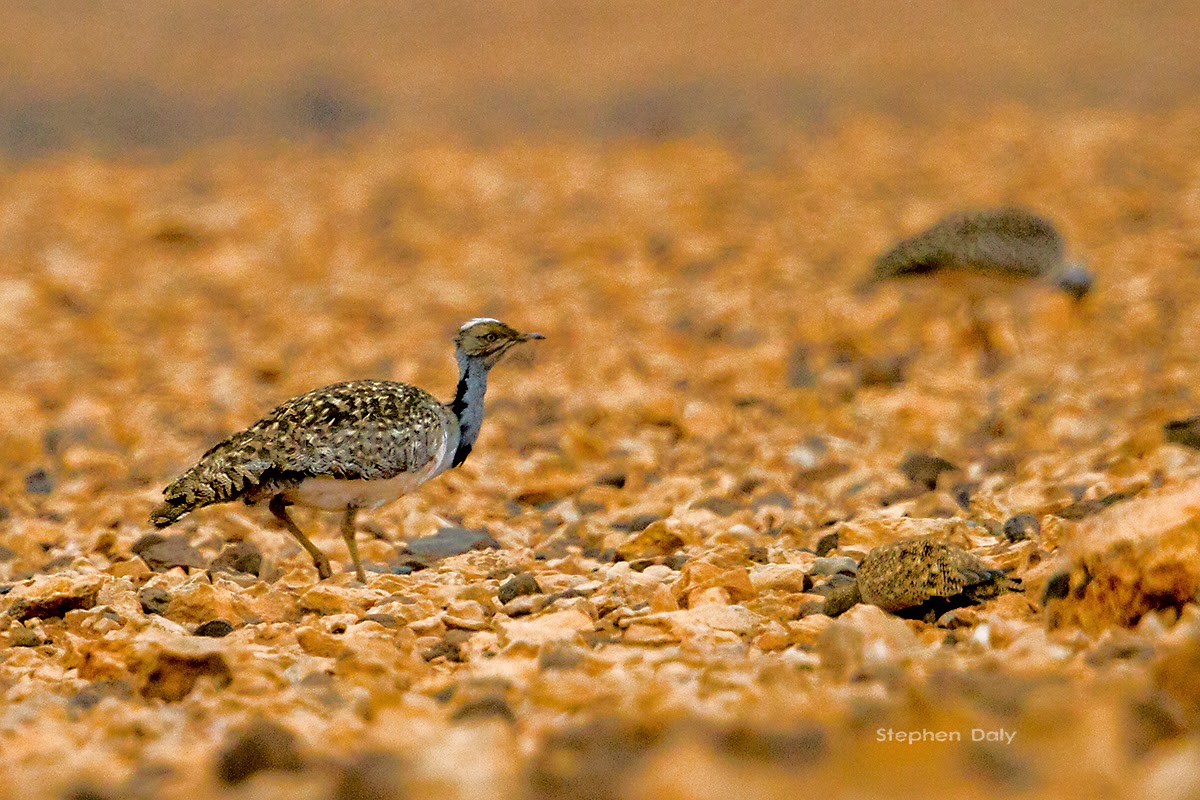

Day 3 – Wednesday 5th November 2014
During the night a cold storm front was racing down the Atlantic from the Arctic bringing severe weather to Europe and right down to the West African coast and the Canaries. This was the first time the north of Fuerteventura had had any rain since March and we knew how important water was to this parched island. At breakfast we saw that there were large puddles around the paths but staff at the hotel commented that there needed to be a considerable amount of rain to fall to make any impression on the landscape and usually the first rains were immediately absorbed on contact or ran off into gullies and gorges that scar the landscape.
Hoping that there might be some water run-off in the small lake at Catalina Garcia and subsequent bird and other wildlife, we drove south only to find that the south of the island was still bone dry and no water had fallen.
We drove north east to look for some of the islands special birds and soon we found two adult Egyptian Vultures sitting on electric cables, hunkered down facing into the wind. Fuerteventura is the only place that it seems such birds do this, preferring rather to find a rock face or tree or perhaps a pylon, but not on the cables themselves. Lack of trees on the island and craggy rock faces are limited so this natural adaptation in using any convenient lookout post is taken.
The birds stayed a while allowing us better scoped views and soon departed and landed on the ground. Our activity had made them curious and we watched another four birds come in. It wasn’t until we checked out a site where local goat farmers threw carcasses of their dead goats in the base of a shallow quarry that the vultures came over to look at what we were up to. This was excellent as far as we were concerned and all of us had good fly-pasts with six birds in the air including a first year bird and a sub adult.
Ravens were then seen at close quarters and three or four Common Buzzards were seen and also heard calling.
Stopping at a small irrigation pond we found a Desert Shrike with a freshly caught gecko and two Ruddy Shelduck on the bank of the earthen scrape. Moorhens, Black-winged Stilt, Common Sandpiper and Black Redstart were present and Spanish Sparrows were abundant.
Later we took a tapas lunch on the coast then headed back north through the centre of the island towards Tindaya.
Another slow and patient drive down toward the coast from the town was needed to look for the special birds of the island. We stopped often and set up our telescopes then continued again scanning with our binoculars. We managed to see many Berthelot’s Pipits in amongst the stone strewn flat plains and there were Trumpeter Finch and two overflights of Spectacled Warbler over the edge of the roadside scrub but our elusive Houbara Bustard was proving tricky to find.
In the end our patience was rewarded when we came across a Houbara right at the edge of the road. The bird had been sheltering behind a small scrubby bush literally three meters from the vehicle and obligingly stood up and walked away from us…. Success!
We watched the Houbara for some time following her with the scopes for some time as she continued walking away almost blending into the background with her amazing cryptic plumage.
Moving down to the coast we parked up and walked along the very dramatic black basalt cliff where Lesser Black-backed Gulls wheeled with Yellow-legged along the coast. Common Kestrel was around but we didn’t find any patrolling or perched Barbary Falcon that afternoon.
On the way back to Tindaya, one bonus was watching two Cream-coloured Coursers seen close by the track, walking quickly across the landscape.
Back at the Hotel the Fuerteventura Chat was on duty and the Black Redstart was ‘clicking and bobbing’ on the gables.
Another delicious and very generous meal was taken at the hotel and we retired as the wind dropped and we had a calm night with no rustling leaves.
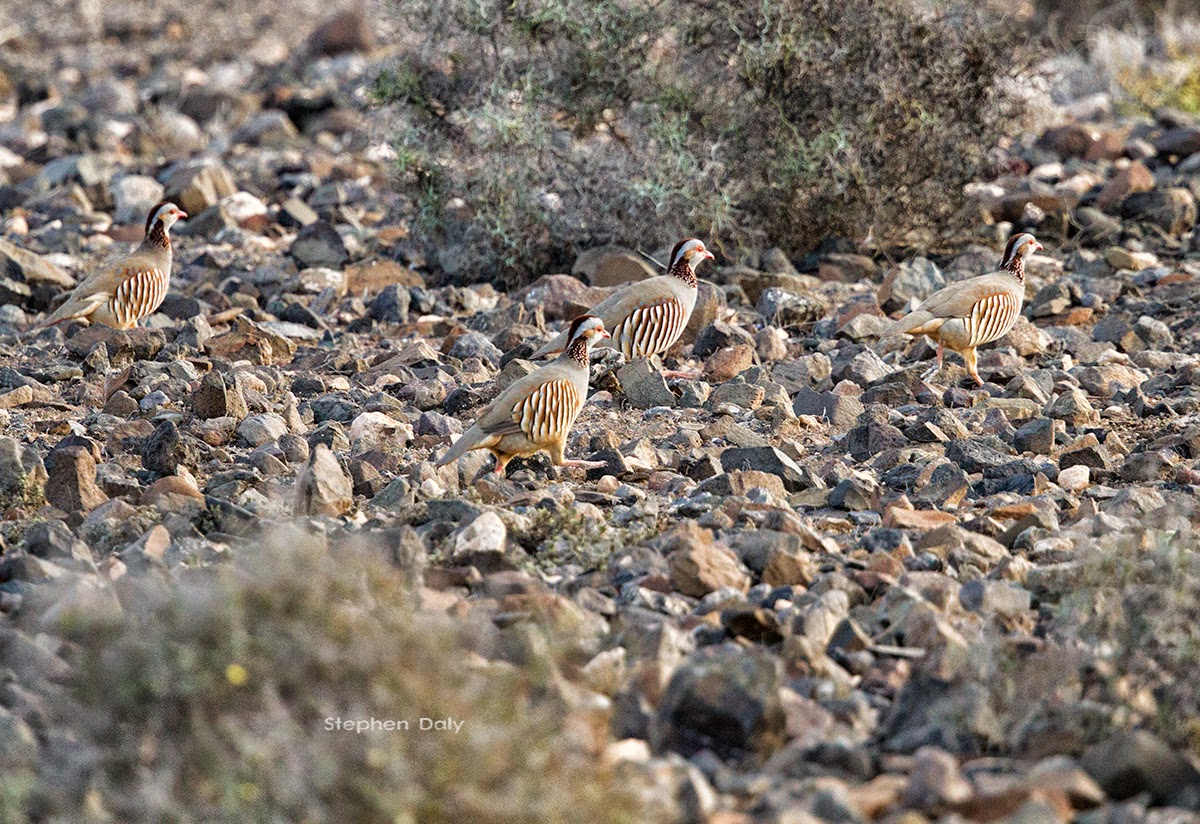


Day 4 – Thursday 6th November 2014
Some early birders in the group had found the islands chat in the gardens before breakfast as well as Desert Shrike and the other local birds. Stone Curlews had been heard calling at dawn from a nearby hillside.
The weather was warm and sunny and the wind was light. A great day for birding!
After breakfast John and Nadine were watching a Grey Heron as we were getting into the minibus. Driving over to the west coast we watched a flock of eleven Barbary Partridge in flight and quickly managed to turn off the road into a flat field to look for them. They had landed out of sight behind some earthen walls on agricultural land and couldn’t be that far away. We quickly spotted the birds walking quickly away from our elevated position and all of us had very good views of this often difficult to find bird.
We stopped at Betancuria and explored the barranco or gorge that runs through the town. This former capital of the island has the best soil on the island and also has more rainfall than most other areas in Fuerteventura.
A Hoopoe was seen in flight and perched and a Desert Shrike called from a tall aloe flower stem. Several Monarch butterflies were watched as were Red Admiral, Common Blue and Geranium Bronze, with Painted Lady butterflies in profusion. A Lesser Emperor Dragonfly was also seen as were several Canary Island Lizards.
The Fuerteventura Blue Tit was seen, which with the Barbary Partridge was another new bird for the trip and ‘lifers’ for many on the trip. Ravens were calling and displaying overhead and Common Kestrels and Common Buzzards patrolled overhead.
We took a coffee in the town then walked further down the gorge finding another Hoopoe which very obligingly let many take close photos. Several Common Blackbirds were seen and a male Spectacled Warbler came in very close and gave everyone excellent views of this lovely Sylvia warbler. Better views of the Fuerteventura Blue Tit were had a short while later as Blackcap, several Sardinian Warblers and Canary Islands Chiffchaff were also watched.
After our tapas lunch we stopped at one of the several observation points high on the road to the south of Betancuria. Apart from stunning views from on high there were lots of very tame Barbary Ground Squirrels coming in to be fed by the tourists. A couple of lower pools of water could be seen from the parking area and Common Linnets, Trumpeter Finches, Spanish Sparrows, Berthelot’s Pipit and Spanish Sparrows were coming in to drink. Another Grey Heron was seen flying across the main road in the town.
Later in the afternoon we searched the Tefia area and found hundreds of Painted Lady butterflies sheltering from the wind and feeding at a small plantation of Tamarisk bushes. We scanned the flat fields nearby and found several small groups of Black-bellied Sandgrouse close to the track that allowed us good views as they fed close to a large goat herd. As we continued on the track we found White Wagtails and Trumpeter Finches feeding at a farm building and a flock of over eighty Ruddy Shelduck were also seen on the stony open field. Several groups of this pretty duck took to the air and flew towards us and as we scanned some of the birds on the ground we saw three Houbara Bustards walking across the landscape, two males and a female. The bustards walked towards us and we quietly set up our telescopes to watch them feeding with the shelduck.
Once back at La Oliva we found a pair of Fuerteventura Chats that happily posed for the group and some took some very good photos.
This had been another good day out in the field and a few in the group had caught up with some birds that they had never seen before.
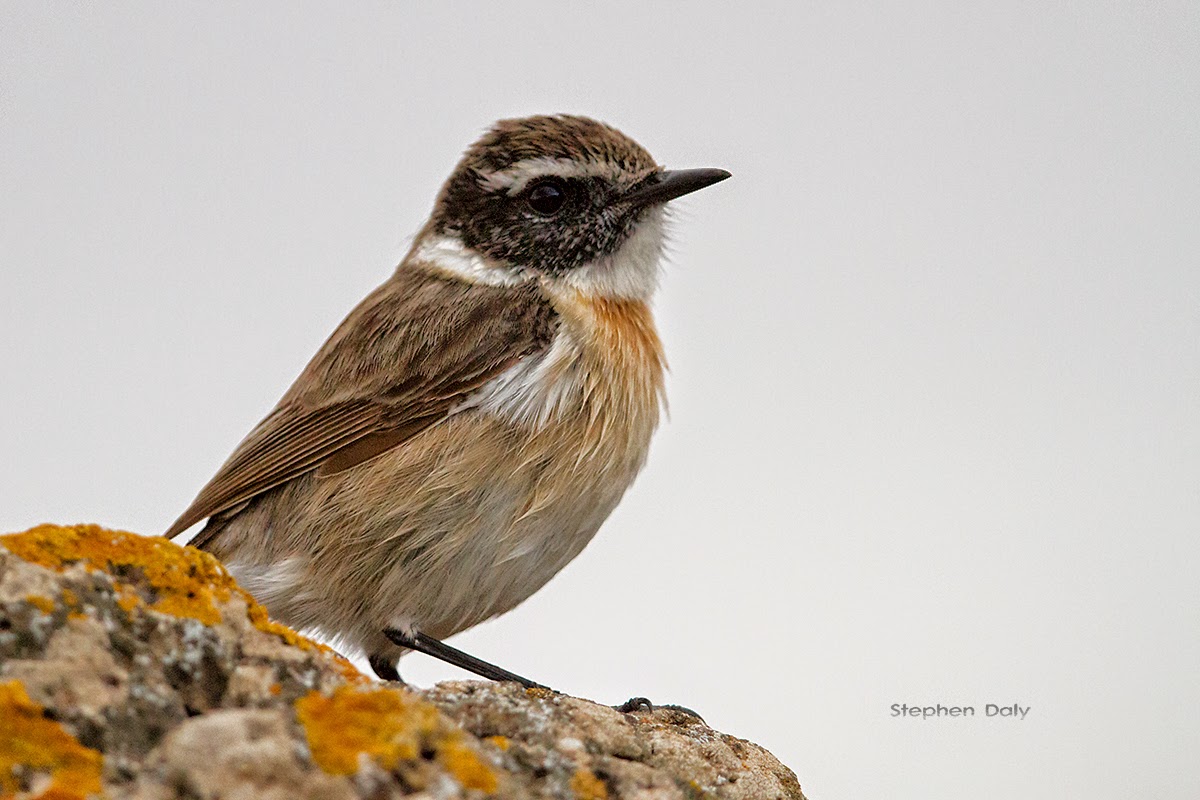



Day 5 – Friday 7th November 2014
Before breakfast Mack and Geoff had been watching Chiffchaff, Black Redstart and Fuerteventura Stonechat was seen around the hotel and Cecile had hear the Stone Curlews calling earlier on just before dawn.
Later we took a tour of the upper part of the town and after watching Spectacled Warbler found a single Laughing Dove sitting on a tall post.
A slow drive around the stony open plain around Tindaya revealed a few mixed flocks of Lesser Short-toed Larks and Common Linnets and we had close views of a male Fuerteventura Chat perched close to the cliffs on the coast. Here we took another cliff walk following the dramatic edge of the western side of the island towards El Cotillo looking again for Barbary Falcon but alas didn’t see it.
We walked back to the parked minibus then drove along other tracks through one of the barrancos to El Cotillo and took a tapas lunch and drinks in the shade. Outside the restaurant we had a clear view of the Atlantic Ocean and Mack spotted a group of Cory’s Shearwaters following a small fishing boat heading back to Corralejo. Just then a lady from the town’s tourist board told us that there had been quite a few young shearwaters landing in the town’s streets during the night, apparently attracted by the lights. A national Spanish TV crew had been reporting this incident and locals and the environmental agency has been checking the birds condition, returning them to sea.
Spurred on by the birds close presence out on the water we negotiated a price for a pelagic trip for a few hours from a local fisherman in his fishing boat and off we went to look at sea birds, particularly shearwaters. Leaving the small harbour at El Cotillo we said goodbye to the numerous Ruddy Turnstones, Rock Doves and Lesser Black-backed Gulls and headed out to the deep blue Atlantic Ocean. After fifteen minutes we spotted one or two distant Cory’s in flight and headed in their general direction. We then saw small groups of Cory’s swimming on the sea. Motoring slowly back and forth, Juan our new fisherman friend and his two lookouts found lots of birds for us to see and photograph. A very large Loggerhead Turtle was spotted by the crew and was briefly seen before it dived and was lost from view. The boat trip was an excellent experience and one that will be remembered by all who took part for a long time to come.
We had dinner back at the hotel and slept well after all that sea air!


Day 6 – Saturday 8th November 2014
Another warm sunny day greeted us as we drove from La Oliva down the coast to Caleta de Fustes. At the rocky shoreline and small beaches we scanned through the rocks and crevices finding Little Egret and a single first year Slender-billed Gull. Sanderlings and Whimbrel were also new birds and later at La Torre we watched Sandwich Terns fishing for whitebait just off the shore. Common Kestrel, Desert Grey Shrike and Trumpeter finches were seen in the nearby Barranco de La Torre but there were no Egyptian Vultures at the well known nest site.
We travelled inland looking for Egyptian Vultures going over some of the ground where we’d seen the birds earlier in the week but there were none showing.
Stopping off at Agua de Bueys we took an early lunch at a rural bar and drove back up the island towards the north and taking the road to Tefia and down some small tracks leading to a goat farm. Here we slowly approached small flocks of scattered Black-bellied Sandgrouse, managing to get some fairly close shots of birds feeding. Diving around the farm buildings we found Trumpeter Finches under the gables and a singing Desert Grey Shrike close by. Ruddy Shelduck, Berthelot’s Pipits, Lesser Short-toed Larks, Trumpeter Finches and a single Grey Heron were scattered across the landscape with lots more Black-bellied Sandgrouse and just as we were enjoying these birds a Barbary Falcon came in fast chasing a fleeing Rock Dove. The chase went on for a few minutes with the falcon completing a full circle around our group and allowed us to get great views as it passed through the bright sky then in front of a nearby hillside which was perfect light showing us that it was a first year bird, typically brown in colour. The Rock Dove made good its escape and the Barbary Falcon slowly gained height over the hillside then was eventually lost from view. The sight of the falcon chasing the dove had also caused confusion, putting around one hundred ‘honking’ and very nervous Ruddy Shelduck into the air.
After searching for this elusive raptor at various locations during the week our efforts had finally paid off. This was one species on what is essentially a small but rare list of birds that’s on the island that all wanted very much to see and the sight of this special episode of a young bird still learning how to hunt effectively, I’m sure will stay with us.
Our last destination was further up the coast to Los Molinos where a very impressive three-masted tall ship was under full sail heading south down the coast. At the barranco at Los Molinos there was quite a lot of water and this was probably the only one with any water to speak of at this time of year. Another Little Egret was fishing but apart from the villages collection of multi-coloured Muskovy Ducks there wasn’t much else of note.
We took our last evening meal after completing our bird lists and talking about the week’s tour and the highlights and special moments on the trip.
Outside a flamenco guitarist played on the terrace and it was the perfect way to spend our last evening on the island.
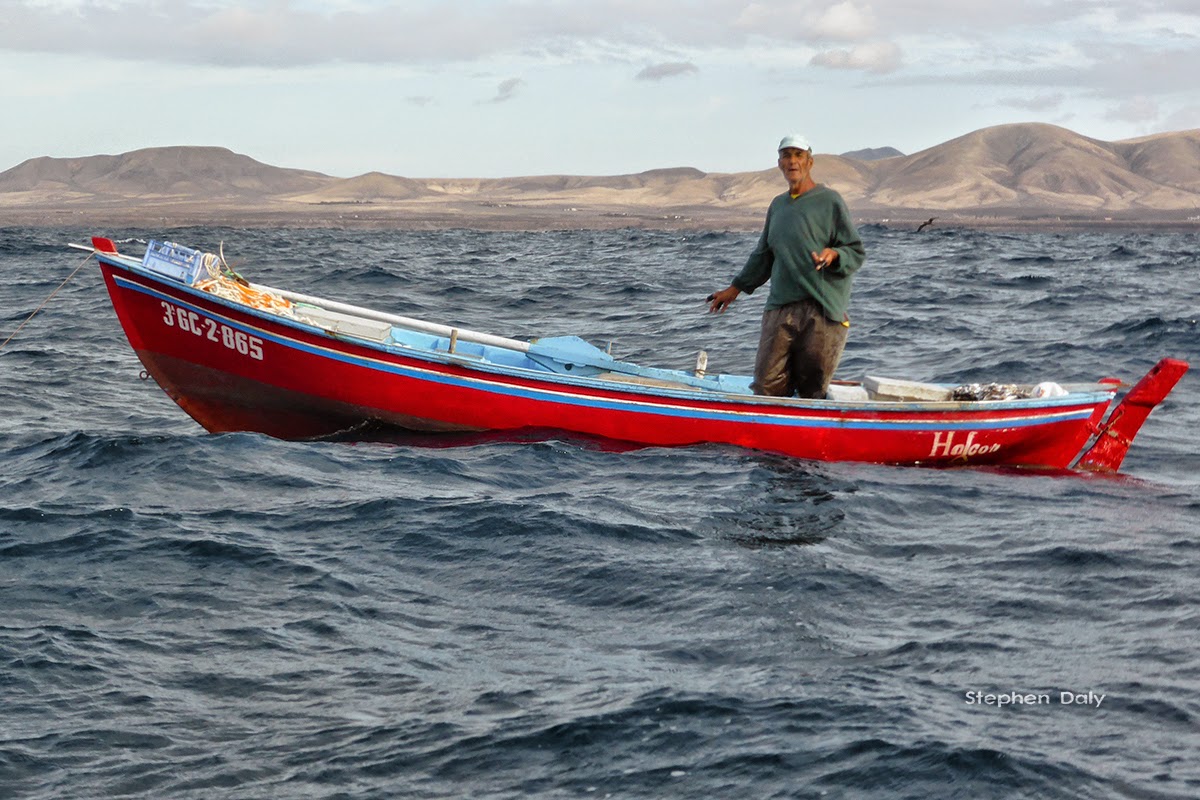


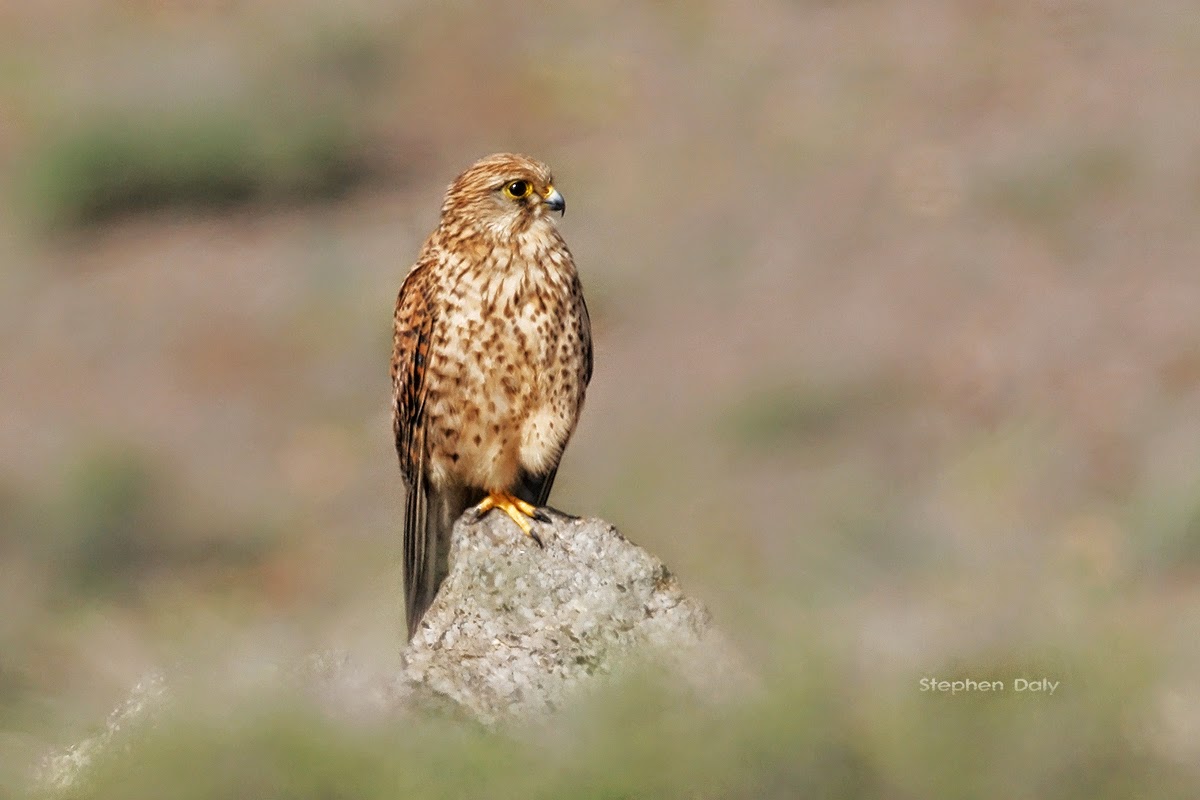
Day 7 – Sunday 9th November 2014
After breakfast we said our farewells to the very attentive hotel staff and loaded the minibus to head south to the islands airport, but there was time for one quick look at a site en route around Tefia.
Driving slowly towards a goat farm we approached a lone Houbara Bustard feeding on the stony ground with some Trumpeter Finches, Common Linnets and Berthelot’s Pipits. Black-bellied Sandgrouse and Ruddy Shelduck flew close to the site and Collared Doves and White Wagtails fed around the goat farm steading.
We arrived at Fuerteventura’s airport in good time, returned the minibus and our check-in and flights were trouble free.
Hopefully we’ll see some of those who took part on this years trip to the island on another Limosa tour and also hope that this diary report will entice others to join us on Fuerteventura for another birding and wildlife adventure. Thanks to all who participated and for your good company during the week.
Stephen Daly, November 2014
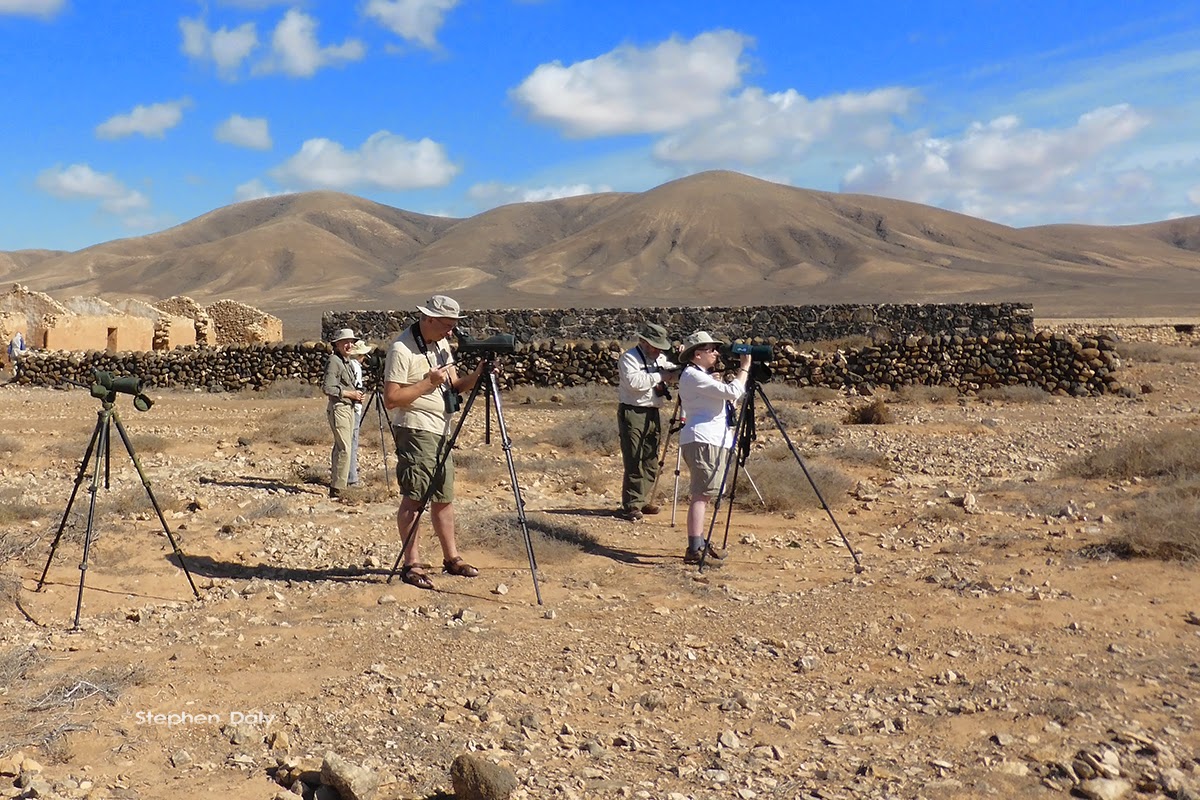


Species List
Barbary Partridge Alectoris Barbara ssp. KoenigiGreat views of a flock of eleven birds near Tindaya
Ruddy Shelduck Tadorna ferrugineaVery common seen most days
Cory’s Shearwater Calonectris diomedeaGreat views of over sixty birds off El Cotillo
Cattle Egret Bulbulcus ibis Two birds seen near the airport
Little Egret Egretta garzetaSeen twice
Grey Heron Ardea cunereaA few birds seen on the coast
Egyptian Vulture Neophron percuopterus ssp. MajorensisVery good views of six perched and flying birds
Common Buzzard Buteo buteo ssp. InsularumFairly common
Houbara Bustard Chlamyditis undulate ssp. FuerteventuraeGood views on three days
Common Kestrel Falco tinnunculus dacotiae canariensisFairly common
Barbary Falcon Falco peregrinoidesOne juvenile recorded
Common Moorhen Gallinula chloropusSeen on two days
Black-winged Stilt Himantopus himantopusSeen twice
Stone-curlew Burhinus oedicnemus ssp. InsularumHeard onlyWhimbrel Numenius phaeopus Seen at Costa de Fustes
Ruddy Turnstone Arenaria interpres Lots of birds around El Cotillo harbour
Green Sandpiper Tringa ochropusOnly one bird seen
Common Sandpiper Acticus hypoleucosSeen three times on tour
Common Greenshank Tringa nebulariaSeen once
Yellow-legged Gull Larus michaellisCommon and seen every day
Lesser Black-Backed Gull Larus fuscusVery common
Slender-billed Gull Chroicocephalus geneiA first year bird was seen at Costa de Fustes
Sandwich Tern Sterna sandvicensisA few birds seen fishing on the East coast
Black-bellied Sandgrouse Pterocles orientalisGood numbers seen feeding and in flight
Cream-coloured Courser Cursorius curso bannermaniSeen twice on tour with very good views
House Martin Delichon urbicumOne bird seen in flight
Rock Dove/Feral Pigeon Columba liviaA common sight with pure Rock Doves seen on west coast
Eurasian Collared Dove Streptopelia decaoctoCommon
Laughing Dove Streptopelia senegalensisGood views of one bird at La Oliva
Barn Owl Tyto alba Heard only
Eurasian Hoopoe Upupa epopsSeen on six days
White Wagtail Motacilla albaSeen most days
Lesser Short-toed Lark Calandrella rufescensFairly common seen most days with some large flocks
Black Redstart Wintering birds at our hotel and other sites
Fuerteventura Chat Saxicola dacotiaeSeen most days. Present in hotel gardens
Blackcap SylviaatricapillaOnly seen once at Betancuria
Sardinian Warbler Sylvia melanocephlaSeen only once
Spectacled Warbler Sylvia conspicillataFairly common and present near the hotel. Great views at Betancuria
Common Chiffchaff Phylloscpus collybitaA few seen each morning at the hotel and other sites
European Robin Erithacus rubeculaA few seen
Common Blackbird Turdus merulaSeen at Betancuria
Ring Ouzel Turdus torquatusThree in flight early morning near hotel and one at Betancuria
Desert Grey Shrike Lanius excubitor ssp. koenigiFairly abundant and confiding views had
Common Raven Corvus CoraxCommon
Spanish Sparrow Passer hispaniolensis Common and seen daily at our hotel
Berthelot’s Pipit Anthus berthelotiiCommon, watched also feeding with other species
Tree Pipit Anthus trivialis One bird seen feeding with Berthelot’s Pipits
African Blue Tit Parus teneriffae degener Present in towns and villages
Common Linnet Carduelis cannabina hartertiSeen most days
Trumpeter Finch Bucanetes githagineus amantumCommon
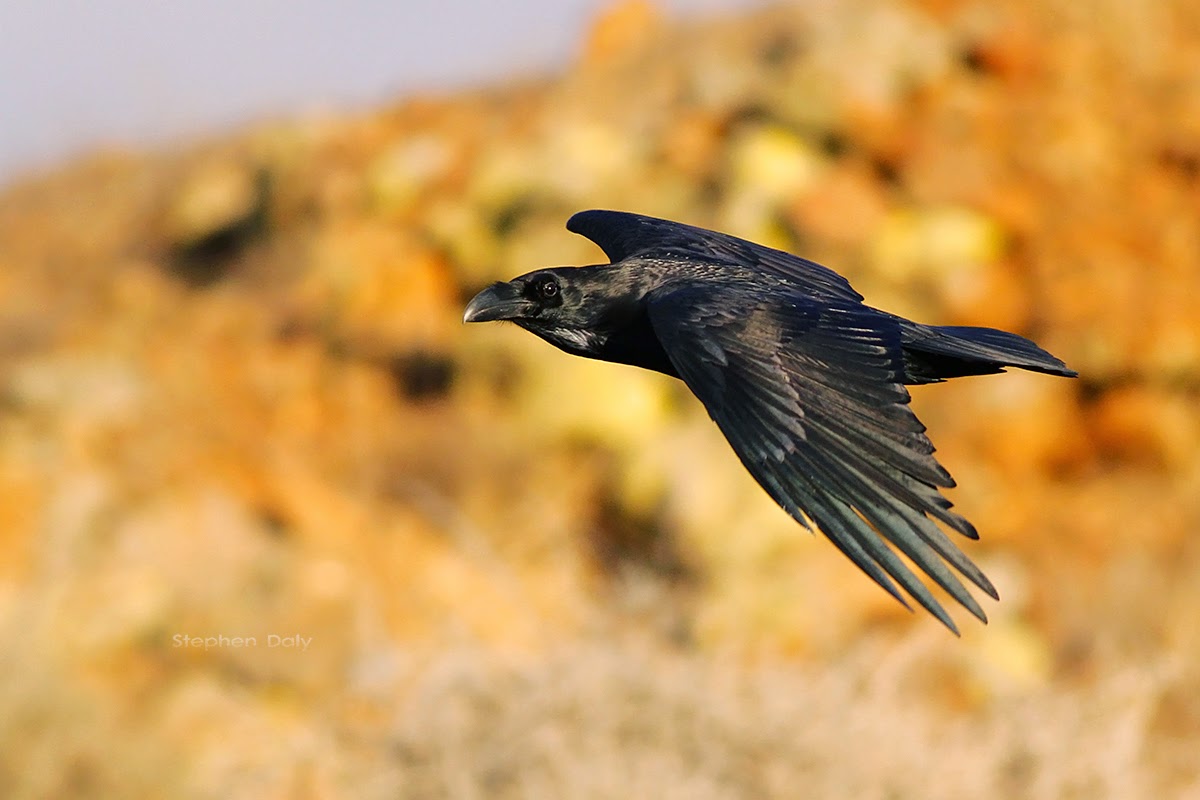

Mammals
Algerian Hedgehog Atelerix algirus (Road-kill) Barbary Ground Squirrel Atlantoxerus getulus Brown Rat Rattus norvegicus (Road kill) Rabbit Oryctolagus cuniculus Pipistrelle Bat
Amphibians & Reptiles Loggerhead Turtle Carretta carretta Moorish Gecko Tarentola angustimentalis Atlantic Lizard Gallotia atlantica Tortoise species introduced to the island
Butterflies Bath White Pontia daplidice Green-striped White Euchloe belemia Greenish Black Tip Elphinstonia charlonia African Migrant Catopsilia florella Tortoiseshell Aglais urticae Clouded Yellow Colias crocea Monarch Danaus plexippus Painted Lady Vanessa cardui Red Admiral Vanessa atalanta Dragonflies Vagrant Emperor Dragonfly Anax ephippiger Blue Emperor Anax imperator Blue-tailed Damselfly Ischnura saharensis Scarlet Darter Crocothemis erythraea Red-veined Darter?
Other Taxa Crimson Speckled Moth Hummingbird Hawk-Moth Lacewing sp.
Stephen Daly
Stephen Daly, has been birding since he was eight years old in his native Scotland. After living in Germany and France he established Andalucian Guides the successful birding and wildlife tour company on The Strait of Gibraltar in Spain and has been living here since 2001. Photographing birds in flight is one passion and his photos can be found in many books, magazines and journals. Studying bird behaviour and bird migration are two other positive aspects of being based on one of the busiest migration routes on Earth.
- Web |
- More Posts(81)
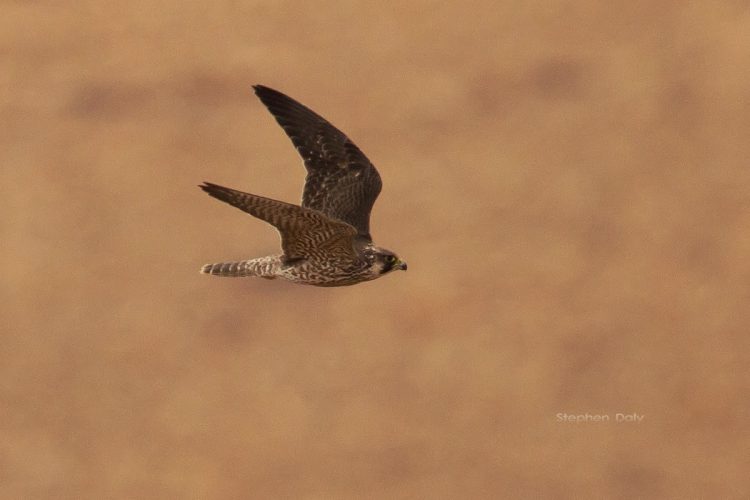


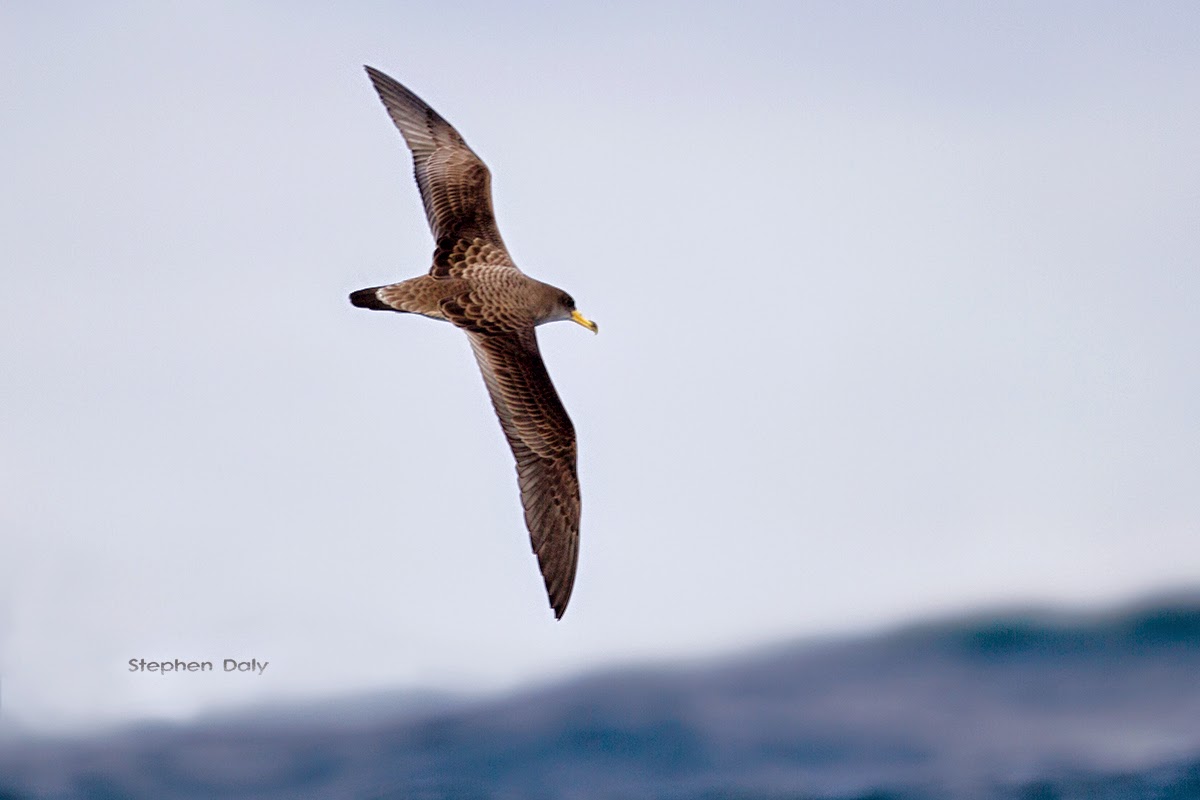

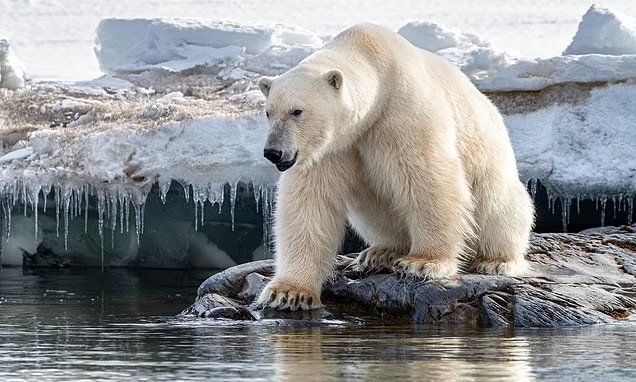
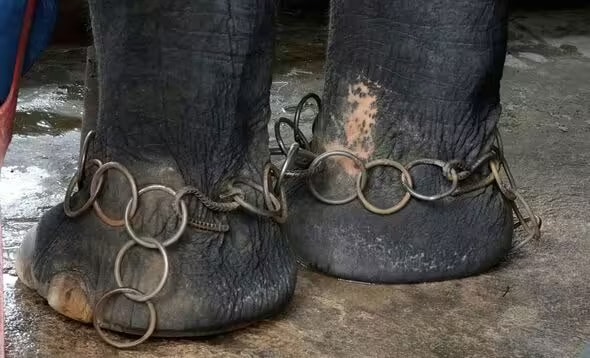
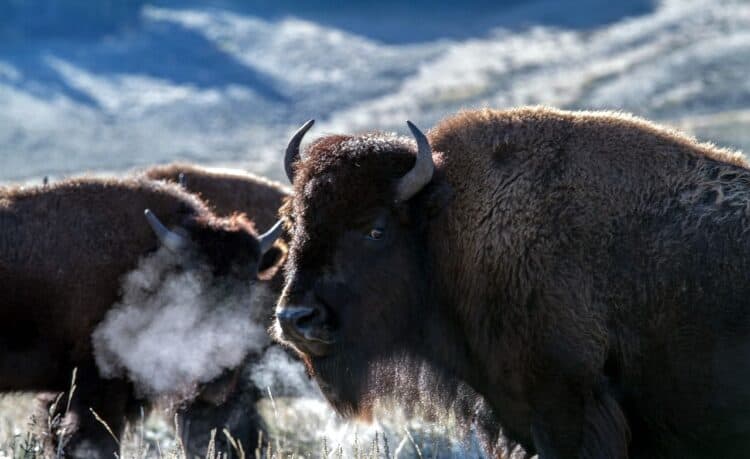
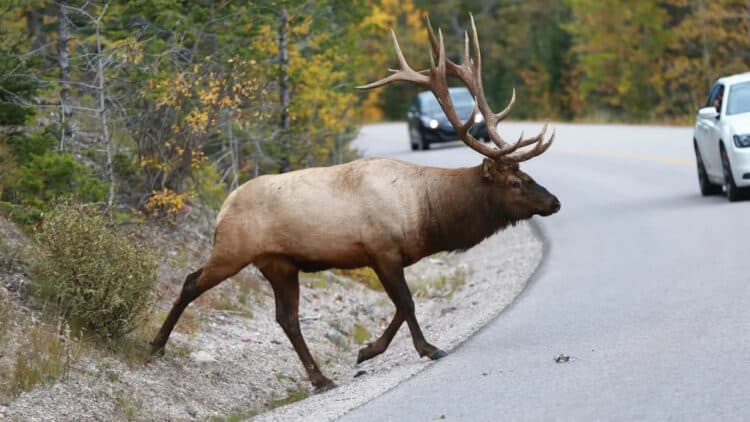
Leave a Reply